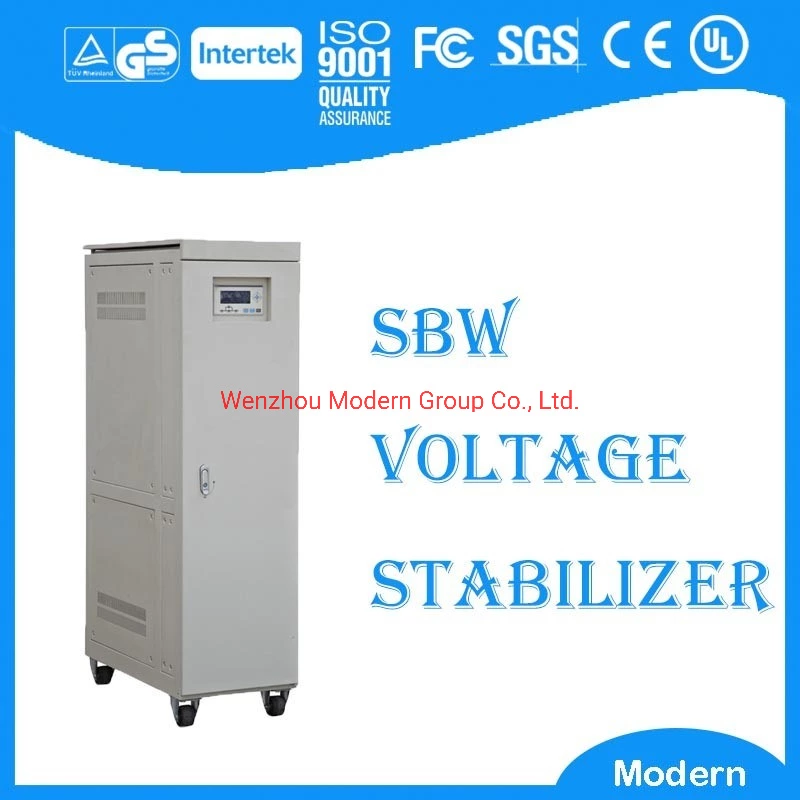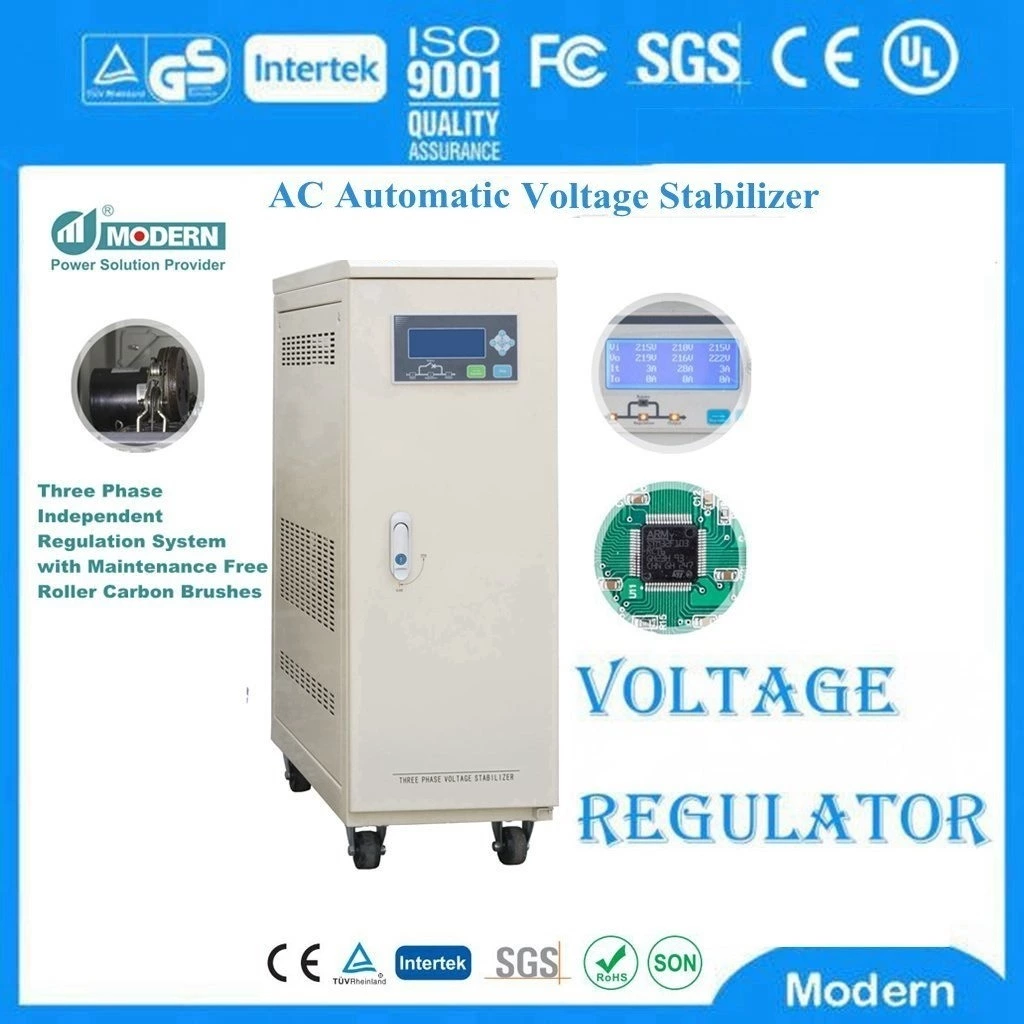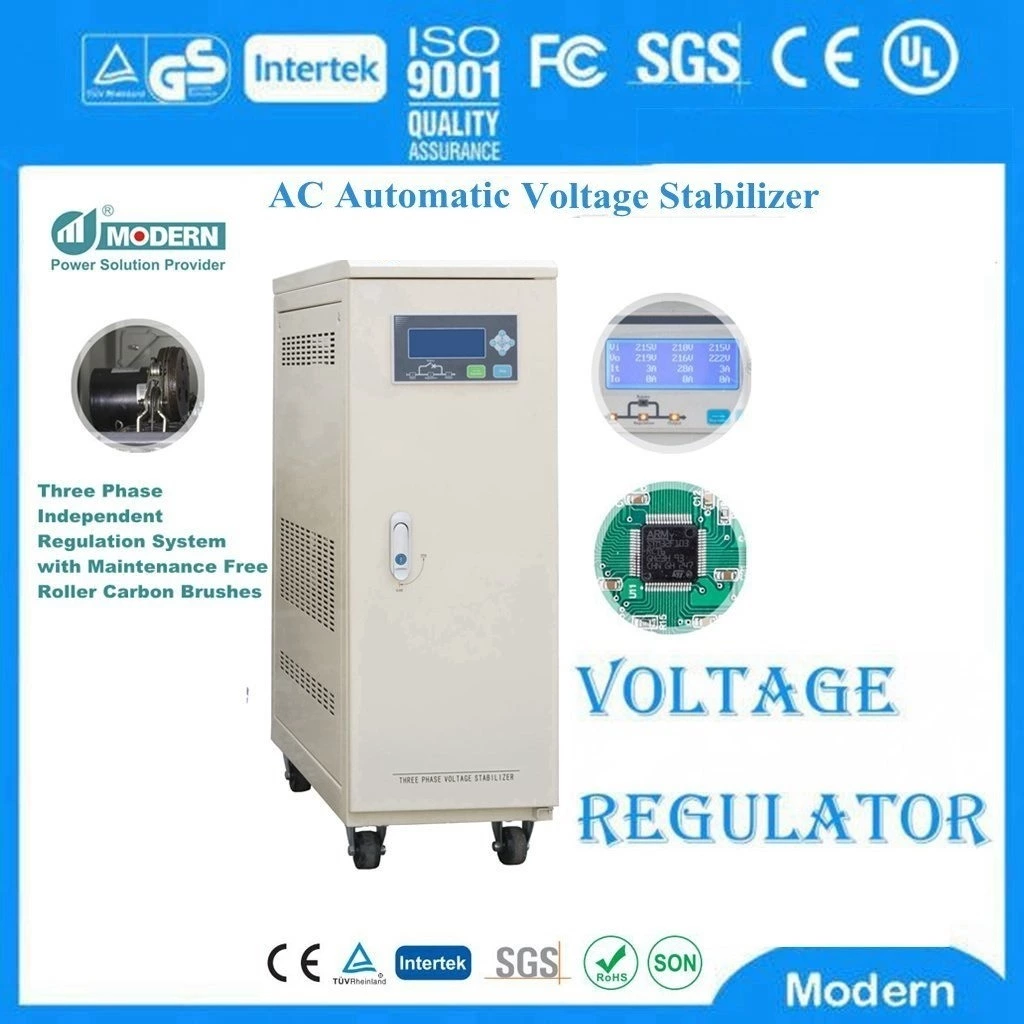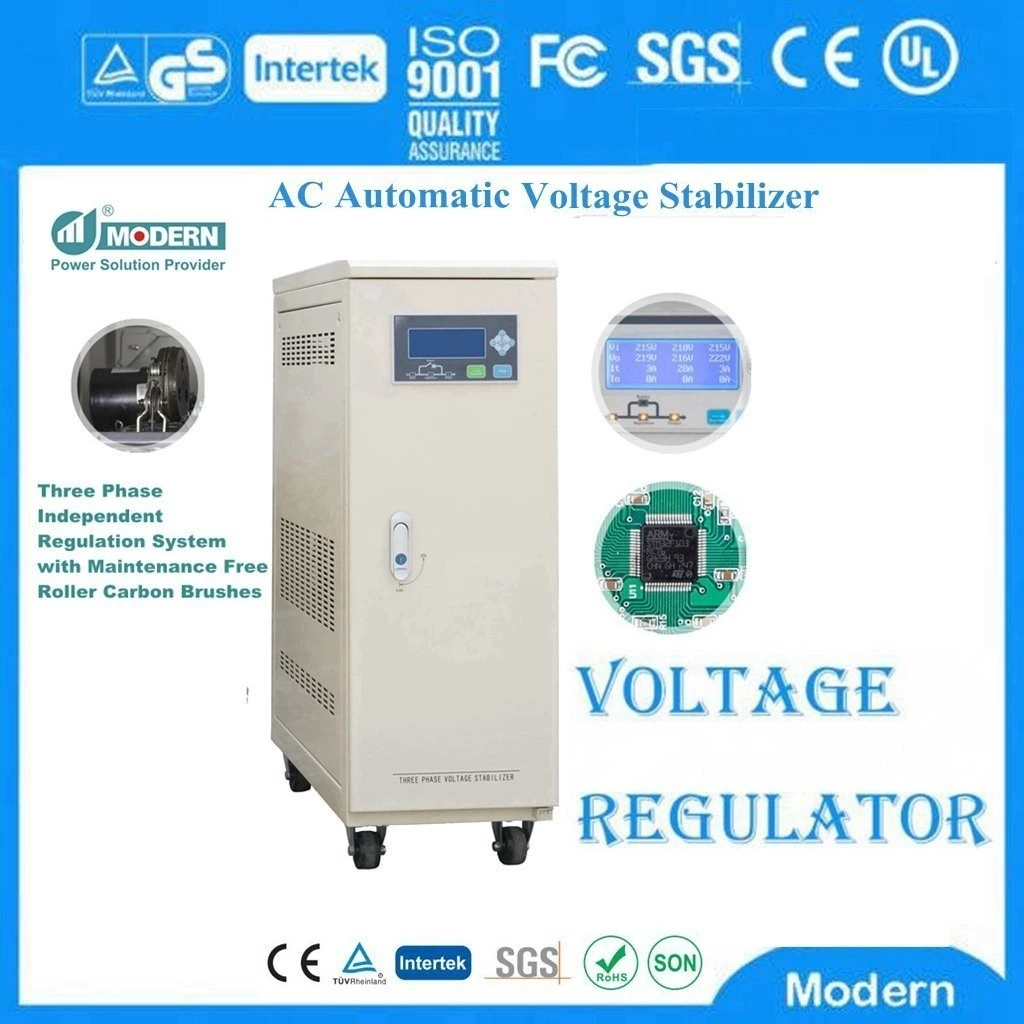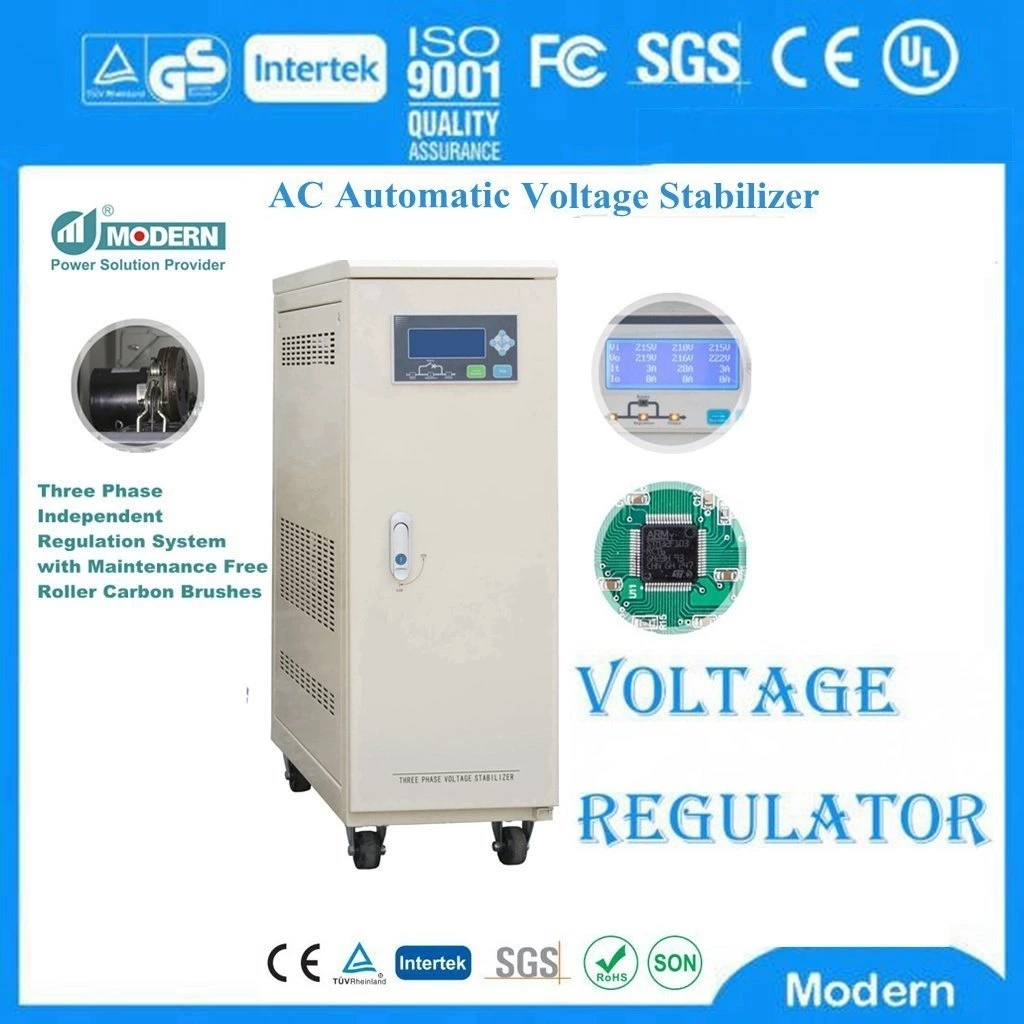Automatic Voltage Regulator
Automatic Voltage Regulator is a new generation of fast voltage stabilizing equipment successfully developed after years of hard work based on the production of compensated power voltage stabilizing equipment for many years. It has many unique technologies in China.
It is mainly composed of isolation transformer, SCR module, CPU control core, fast voltage stabilizing technology and safety protection device, realizing full contactless control, safe, efficient, energy-saving and environmentally friendly, and is a perfect combination of SCR switch technology and transformer technology.
Basic principle
It adopts novel DSP operation metering chip control technology, fast AC sampling technology, effective value correction technology, current zero-crossing switching technology and fast compensation voltage stabilizing technology, combining intelligent instrument, fast voltage stabilization and fault diagnosis together, making the product safe, efficient and precise.
Advantages and disadvantages
Advantages:
1. Intelligent instrument display: intelligent instrument display system (display voltage, current, power, power factor, etc.), clear, accurate, high resolution, membrane button operation, safe and reliable. (The brushless voltage regulator only indicates the pointer, which is not clear and accurate. And it can only indicate voltage and current.)
2. High-speed response: When the input voltage fluctuates greatly and frequently, since the voltage regulation speed is 20 milliseconds, as long as the voltage regulation range of the voltage regulator is wide enough, the output voltage can always be maintained at the voltage regulation value set by the user, and will not affect any production equipment and instruments. There will be no overvoltage or undervoltage bypass phenomenon, so there is no need to have a function of automatically returning to the voltage regulation state after the voltage is normal. (The carbon brush type voltage stabilizer has slow response speed and voltage stabilization speed, and it takes 4 to 10 seconds to stabilize the output voltage. If the grid voltage fluctuates greatly and frequently, it will not stabilize the voltage at all, and will also burn out the electrical equipment. For example, when the input voltage drops from 220V to 150V in an instant, it drops by 70V, and the output voltage is equal to 150V, which is far below the safe voltage. The equipment such as computers, lighting, air conditioners, digital control equipment, etc. will all stop working. When the input voltage rises from 150V to 220V in an instant, it rises by 70V, and the output voltage is equal to 290V. At this time, all electrical equipment will burn out.)
3. The voltage stabilizer does not perform compensation function when it is turned on. The output voltage is the same as the input voltage. The output voltage value must be detected 1 second after the power is turned on before the corresponding compensation voltage is stabilized. In this way, the output voltage will not be too high or too low when the power is turned on, which will not burn out the electrical equipment. (The brushless voltage regulator does not have this function. If the input voltage was very low when the power was turned off last time, and the voltage regulator is in the boost state, the boosted voltage value is relatively high, then this state will remain after the power is turned off. When the power is turned on next time, the input voltage may be relatively normal or very high, plus the voltage boosted by the voltage regulator, the output voltage will be very high and burn all the electrical equipment. On the contrary, when the input voltage was very high when the power was turned off last time, the voltage regulator is in the step-down state, and the voltage drop value is very large. After the second startup, when the input voltage is very low, the output voltage will be even lower, and the electrical equipment cannot work normally. If this happens frequently, it is easy to break.
4. Strong overload capacity: It can be used continuously under 100% rated load conditions, and can withstand 10 times the current for 10 milliseconds and 3 times the current for 1 minute without damaging the machine. (The brushless voltage stabilizer cannot run at full load for a long time. Because the temperature of the voltage stabilizer rises after loading, the contact area between the carbon brush and the toroidal transformer is small, and the contact surface between the carbon brush and the toroidal transformer will spark, which is easy to burn the carbon brush and the toroidal transformer. In addition, if the grid voltage fluctuates greatly and frequently, the motor drives the carbon brush to swing back and forth, so the carbon brush wears out quickly and needs to be replaced frequently.)
5. No distortion: The current zero-crossing switching technology is adopted, and there is no interruption during the switching process, and no surge current is generated, so that the waveform is not distorted. The isolation transformer used in the automatic voltage stabilizer is an isolation compensation transformer, that is, the main circuit and the compensation circuit are isolated. The advantage of this circuit is that when the thyristor of the compensation circuit switches the voltage gear at the current zero point, the voltage and current waveform of the main circuit will not produce spikes or interruptions. Instead, it is a standard sine wave.
6. Three-phase regulation: Each phase voltage is independently regulated, without affecting each other, and the voltage regulation accuracy is as high as +-1%. And each phase can set the output voltage separately according to the load requirements. If the output voltage value of each phase is set to the same, the three-phase output voltage imbalance is less than 1%. (The carbon brush type voltage regulator has poor voltage regulation accuracy, which is +-2% to +-5%, and it cannot independently regulate each phase. When the input voltage is unbalanced, the output is also unbalanced. It can no longer meet the current requirements of many loads for high voltage accuracy. Such as: testing instruments, printing machines, CNC lathes, computer gongs, wire cutting machines, etc.)
7. High efficiency, energy saving, environmental protection, efficiency of more than 99%, small size, convenient transportation, and does not take up much space when placed. (The carbon brush voltage regulator has a low efficiency of only 96%~98%, which is not energy-saving and environmentally friendly. It is large in size and weight, inconvenient to transport, and occupies a large area when placed.)
8. Safe and reliable: It is equipped with overload, overvoltage, undervoltage, phase loss, short circuit, overheating protection, lightning protection and fault diagnosis functions, which can protect the load in 5 seconds. Customers can rest assured to buy and use our products. (The carbon brush type voltage stabilizer does not have these functions, which is prone to burning out the load machine, causing fires, and other problems.)
9. Strong preset function: the output voltage value, protection limit, voltage regulation accuracy, and voltage regulation speed can be set arbitrarily.
10. Bypass function, easy maintenance: It can be switched between "voltage regulation" and "bypass direct power supply", which is convenient for use when there is a fault repair. (The carbon brush type voltage stabilizer does not have this function. When there is a fault and maintenance, it can only be powered off and stopped, which will delay production and cause losses to customers.)
11. Strong anti-interference ability, the power supply and sampling of the control circuit board all have high, medium and low frequency filtering circuits, and the drive circuit of the control thyristor is also output with optocoupler isolation, which can resist pulse interference signals above 2000V. If there are spikes in the grid voltage waveform and interference signals, they can be dealt with calmly. (The brushless voltage regulator does not have this function. The grid voltage waveform has spikes. When there is an interference signal, the voltage cannot be stabilized normally. The voltage is either high or low, which burns the load.)
12. The voltage regulator voltage is sampled by a digital AD chip. If the input voltage waveform is true, the calculated voltage values are all effective values, which will not affect the output voltage change. (The voltage of the brushless voltage regulator is sampled by a rectifier circuit, peak sampling. When the input voltage waveform is true, the output voltage will increase or decrease. The more serious the trueness, the more serious the increase or decrease of the output voltage, and the electrical equipment used will burn out.)

 Русский
Русский
 Français
Français
 Português
Português
 Español
Español
 اللغة العربية
اللغة العربية
